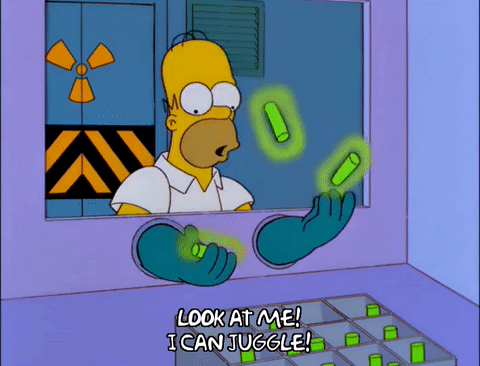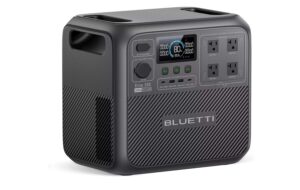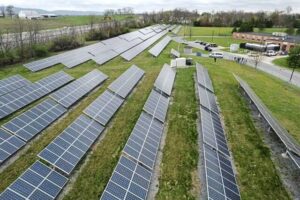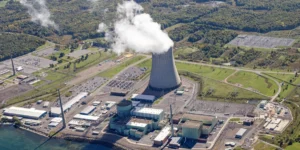Nuclear power stations are not appropriate for Australia – and never will be

The prospect of nuclear power in Australia has been a topic of public debate since the 1950s. While Australia has never had a nuclear power station, we do have 33% of the world’s uranium deposits and we are the world’s third largest producer of it. Periodically, as with the changing of the seasons, various individuals appear in the media singing the virtues of nuclear energy – claiming it is the only option for clean and reliable electricity in Australia.
In fact, over one third of Australia’s electricity is already powered by renewables, and new initiatives like the Capacity Investment Scheme are set to push us towards 82% renewable energy by the end of this decade. While the move to clean energy is still not happening fast enough, it is underway and starting to speed up. We do not need distractions like nuclear to derail our progress now, so let’s set the record straight.

Why doesn’t nuclear power make sense for Australia?
1. Nuclear power stations can’t be built anywhere in Australia.
They are banned in every state, and in every territory. Such bans were introduced because of community concerns about the health and environmental risks. Many parliamentary inquiries at a federal and state level – see this Victorian Inquiry, this Federal Inquiry, and this South Australian Inquiry for instance – have been held into nuclear energy, and all have concluded that it makes no sense in Australia.
2. Nuclear power stations are expensive and take too long to build.
Australia’s independent science information agency, CSIRO, has found that solar and wind are by far the cheapest ways of producing electricity(even when factoring in storage). In contrast, the cost of building and operating nuclear in Australia remains prohibitively high.
Analysis conducted by the nuclear industry itself shows nuclear power stations take an average of 9.4 years to build – compared to 1–3 years for a major wind or solar project. Australia needs to replace its ageing coal-fired power stations as quickly as possible to rapidly reduce emissions this decade. As shown in the Australian Energy Market Operator’s Integrated System Plan, by far the cheapest and quickest way to do this is to ramp up renewable energy paired with storage like pumped hydro, and batteries.
3. Nuclear power poses significant community, environmental, health and economic risks.
Radiation from major nuclear disasters, such as Chernobyl in 1986 and Fukushima in 2011, have impacted hundreds of thousands of people and contaminated vast areas that take decades to clean up. Even when a nuclear power station operates as intended, it creates a long-term and prohibitively expensive legacy of site remediation, fuel processing and radioactive waste storage.
4. Nuclear power is not renewable, and it is not safe.
Uranium is a finite resource just like coal, oil and gas. It needs to be mined and, just like mining coal, oil and gas, this carries serious safety concerns, including contaminating the environment with radioactive dust, radon gas, water-borne toxins, and increased levels of background radiation. On the other hand, energy generated from the sun and wind releases no pollutants into the air and is overwhelmingly considered to be safe.
There you have it: nuclear power is expensive, illegal, dangerous and decades away from powering our homes and businesses. It makes no sense. On the other hand, energy from the sun and wind is cheap, abundant, safe and available now. So, let’s get on with building more renewable energy!
What is a nuclear power station?
Nuclear power stations run on uranium. When a uranium atom is split inside a reactor, heat and radiation is produced. This process is called nuclear fission. The heat produced from this process is used to create steam from water. The steam drives a turbine that powers a generator. The generator creates electricity.
Unlike coal and gas, no greenhouse gas pollution is created in the operation of the nuclear reactor. However, all other steps involved in producing nuclear power – from mining, to construction, decommissioning and waste management – result in greenhouse gas pollution.
Small modular reactors are nuclear reactors with a ‘small’ capacity of 300 megawatts or less and ‘modular’ in the way reactor components are produced. Based upon these definitions, no small nuclear reactors have ever been built.
Join the Climate Council for more helpful explainers from Australia’s leading climate communicators, straight to your inbox.
Case Study 1: Hinkley Nuclear Power Station, United Kingdom
When this project was first being promoted, the CEO of EDF, the majority owner of the Hinkley Power Station, predicted that the nuclear power station could be switched on in 2017. It is currently slated to open in 2031, almost a decade and a half late.
Around the same time, the UK Government priced the project at 4 billion UK pounds. It is now expected to cost between £35 and £46 billion pounds.
These enormous cost overruns have even created tension between the UK and French governments, with the political leaders in both countries disagreeing over who is responsible for covering billions in additional costs.
Case Study 2: NuScale Power, United States of America
Rising project costs forced the only company to have secured regulatory approval in the US for a Small Modular Reactor to cancel its first project.
When it launched in 2020, NuScale’s Idaho-based project was expected to cost $3.6 billion US dollars and produce 720 megawatts of electricity. Just three years later, in 2023, the project cost had blown out to $9.3 billion US dollars while capacity had reduced to 496 megawatts.
At the time the project was cancelled, NuScale had attracted just 20% of the customers it needed to deliver the project.
Meeting the climate challenge means taking bold and decisive action this decade with the technologies that are ready to go in Australia today. The significant limitations nuclear energy faces means that there is no real prospect of it playing a role in reducing Australia’s emissions.
Need more information?
If you are looking for another source of trusted information on nuclear energy, we recommend reading the latest explainer from Australia’s independent science-based information agency, CSIRO.






